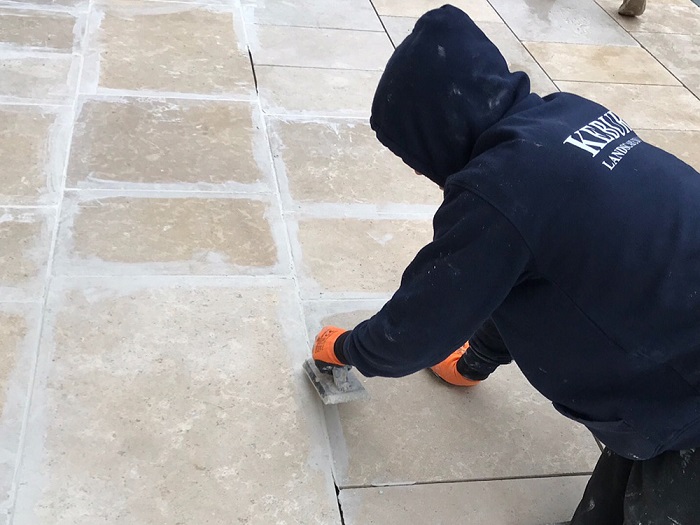Grout is the unsung hero in the renovation and construction world. It is used in filing voids between gaps such as those in kitchen or bathroom tiles, in waterproofing large industrial and commercial structures like bridges and dams, and when strengthening structural elements. Its exceptional strength, high chemical, and corrosion resistance, ability to prevent water ingress, and add visual appeal make it the ideal material for a range of household, commercial, and industrial projects.
Grout Basics

Grout is a viscous, powdery material usually consisting of a mixture of cement and sand and gets its adhesive and binding qualities when mixed with water. Different additives like epoxies, polymers, and gravel add different properties and uses, meaning there are several types of grouts to choose from. The material is seen in pressure grouting to strengthen soils, connecting pre-cast concrete columns, embedding rebar and heavy machinery in concrete floors, in repair work when filling voids and cracks, and in creating long-lasting seals in joints between tiles and other building materials. This wide range of uses means grouting begins by first choosing the right type for the job.
Grout Types
Grouts can be grouped into cementitious and chemical grouts, with several different types in each group.
Cementitious Grouts
These have cement as the main binding material and can include additives such as sand and polymers. The powdery mixture hardens when water in the correct ratio is added. The major types of cement grouts are sanded, unsanded, and latex-modified grouts.
Sanded cement grouts consist of Portland cement, sand, and other additives and are the main type of grout used with tiles, stone, and pavers. The sand has a crucial binding role and prevents cracks. This grout works best in voids and seams over 3mm or 1/8th inch. It is also the preferred grout in large-scale industrial projects, used to strengthen and stabilise bridges, dams, and anchored elements, and is injected readily mixed with water. Using a lower water content and varying cement types and additives changes the grout’s viscosity making it easier for it to penetrate smaller voids and cracks.

The material is poured at temperatures between 10 and 30 degrees Celsius in dry weather (in outdoor application) and has a curing time of between 48 and 72 hours. This can be shortened with different additives. A common type of industrial cement grout is High Early Strength Structural grout with alumina cement and admixtures that enable it to cure quickly, generally within 24 hours. Similar is non-shrink grout used in concrete repair work and in load-bearing structural elements, and actually ‘expands’ when hardened.
Unsanded or ‘wall’ grout works best on ceramic tiles and marble in seams that are smaller than 3mm. The absence of sand means it has a finer texture and cleaner finish. Both sanded and unsanded types can also be sealed for better water resistance.
Latex-modified grout is a cement grout that has been strengthened with polymer additives. This performs better than traditional sanded grout in tiling applications as it has much lower water absorption, and can be mixed with pigments for interesting colours.
Chemical Grouts
Chemical grouts are used in both household and large-scale construction projects. They are an emulsion of water and resins and are thinner. The most common types are epoxy, acrylic and Furan grout.
Epoxy grouts have high strength and durability, and are able to withstand inclement weather and temperature extremes. They’re steadily replacing traditional cementitious grout in tiling due to stronger performance against stains, cracks, and chemicals, so don’t require sealing. In industrial applications, epoxy grouts are used in soil stabilisation, controlling groundwater levels, and securing bases to concrete. Besides being much stronger, it also cures faster, usually within 24 hours, so ideal for fast-paced projects.
Acrylic grouts are more flexible and have a higher resistance to water permeation. They’re ideally used in wet outdoor applications, such as pools and spas and tiles that are prone to chipping and cracking. Furan grouts are similar to epoxy types but fare better when exposed to chemicals. Their high heat resistance makes them ideal for fireplaces, kitchens and labs.
Grouting Tiles: A How-to Guide

1) Choose Your Grout
As mentioned, you can choose different types of grouts for tiling jobs. Sanded grouts are better for wider gaps, whereas unsanded grouts deal with smaller gaps and leave a neater finish. Both cement grouts are easier to apply than epoxy grouts.
2) Get Tools Ready
You’ll need a grout float to spread the mixture, a sponge to remove excess grout and water, a clean cloth to wipe away the remaining grout, and buckets with clean water and mix the grout. To mix the grout you can use a paddle mixer attached to a drill.
3) Mixing
Using water in lower ratios means the grout retains higher bonding strength. Generally, a 4-kilo bag of grout requires roughly 1 litre of water for the best results.
4) Applying
A good idea is to apply readily-mixed grout with the float set at 45-degree angles and in smooth sweeping movements into the gaps. Use the float to wipe away excess grout as you move steadily from one section to another. Edges and tight spots may require smaller edge floats.
5) Finishing Off
Use dried sponges to clean the remaining grout once you’re done with the entire surface. When the grout has hardened, use a dry cloth to clean any remaining water or grout. If you’re picky about water getting in, ensure that you use a compatible grout sealer.











